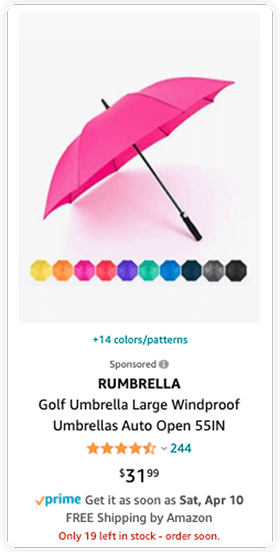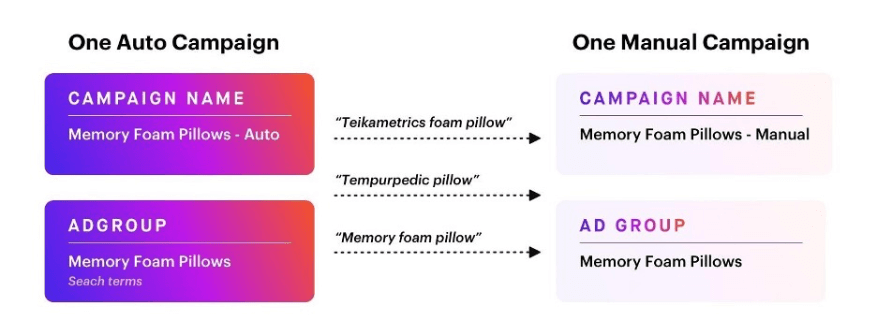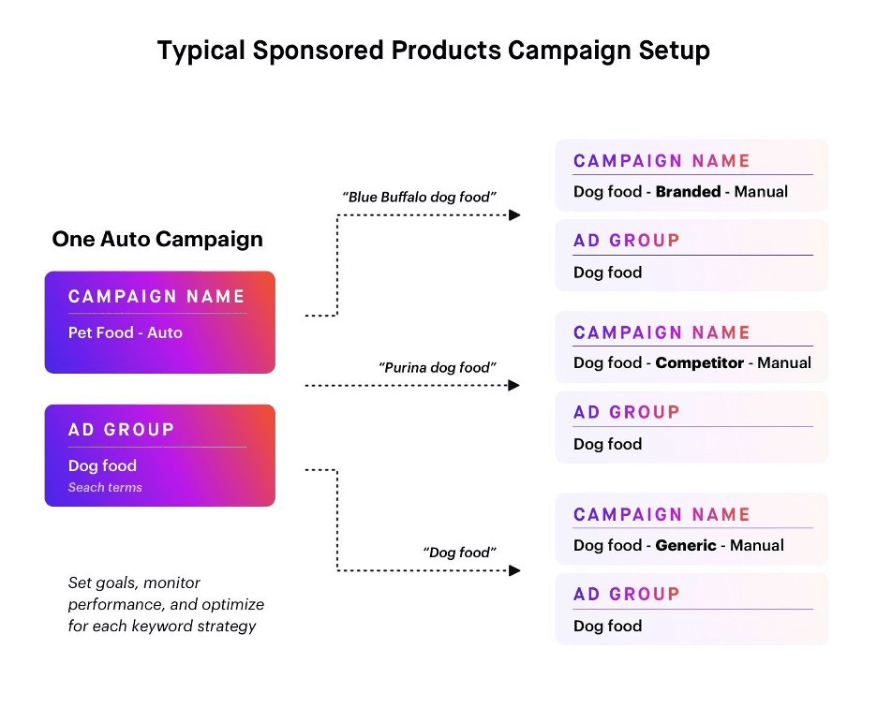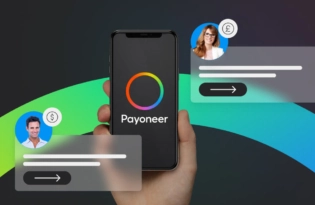An expert guide to Amazon advertising strategies
Learn the proper Amazon Sponsored Products, Brands, and DSP strategies to accelerate sales and grow your business with expert guidance from Teikametrics, a leader in Amazon ad optimization.

As an Amazon seller, you already know that advertising is a pay-to-play game to compete on the Amazon platform. What you need is expert guidance so you can be sure you’re not unnecessarily wasting money. In order to thrive and succeed on Amazon’s competitive platform, it’s imperative that you know the tried and true strategies for Amazon ads to scale your business and achieve your desired return on ad spend.
That’s why we’ve teamed up with Teikametrics, a leader in Amazon ad optimization, to share best strategies for success with three powerful ad types – Amazon Sponsored Products, Sponsored Brands, and DSP. In this guide, you’ll find out which approaches you can implement to accelerate your sales and grow your Amazon business.
There’s a fair amount to cover, so let’s waste no more time and dive in.
Sponsored products
Amazon Sponsored Products are one of the most common ad types utilized by sellers and brand owners to advertise their products on Amazon and they’re an important part of any Amazon ad strategy.
See the below example from Amazon.com showing a Sponsored Product placement that appears when searching for “pink umbrella”.

Sponsored Products ads allow you to promote individual products with targeting based on keywords searched by consumers (e.g. “preschool toys”), or product attributes (e.g. “Brand X toys with 4-star ratings”). The purpose of Sponsored Products ads is to secure a higher ranking or exposure in specific keyword searches or have a product advertised when consumers view relevant product detail pages.
Using sponsored products across the product lifecycle
Amazon Sponsored Products ads are useful across nearly every product lifecycle stage, provided you tune your strategy.
For example, brands launching a new product on Amazon need to be more aggressive to capture sales without the benefit of a high organic ranking on the search results page. The goal at this point in the product life cycle is to drive sales volume to establish the product on the Amazon marketplace.
Amazon Sponsored Products ads are also useful for sellers who want to breathe some life back into a product with a declining sales rank. In this situation, instead of being aggressive to drive volume, like in the product launch stage, you’d want to tailor your campaign more towards driving efficient sales. At this stage of the product life cycle, the focus will be on using Sponsored Products for incremental profit.
Optimizing sponsored products bids
Every time someone initiates a search on Amazon a real-time auction occurs for an ad to win the spot. Because your advertisement will only show up if you win a spot in the auction, selecting the right bid is extremely important.
It’s recommended to set your default bid at the keyword level (rather than at an ad-group level). This allows you to factor in the true value of a given click more granularly by taking into consideration a product’s margins, conversion rates on a given keyword, and overall volume generated by that keyword.
While this strategy for Amazon keyword bidding helps promote efficient growth, it requires constant adjustments based on market dynamics and data.
For example, a keyword may perform terrifically for a solid month, with steady conversion rates at higher volumes. However, if a trend develops with fewer people buying your product after clicking on an ad, your conversion rate goes down.
You need to adjust your bid to reflect the now lower likelihood of a sale. Otherwise, you could end up spending more on ads than you make selling the products. Your bids need to change based on shifts in key revenue-related metrics like conversion rate or conversion volume.
Calculating and making these adjustments manually may be doable for small sellers just getting started, but once you’re growing on Amazon it quickly becomes untenable to do this at scale. Having bidding technology software to automate this process makes a big difference.
Optimizing sponsored products campaigns
Taking the time to set up a proper Amazon PPC campaign structure will enable you to direct your advertising spend where it needs to go and achieve your business goals. Careful campaign organization can help you to avoid messy campaign structures such as catch-all campaigns with dissimilar products jumbled together, putting the same product in multiple campaigns without a distinct purpose for each, or grouping together products with widely variant margins or goals.
The problem with disorganized campaigns is that they can lead to wasted spend and missed opportunities. For example, if products with different goals are grouped together (e.g. a new product you’re launching, along with a model you’re trying to liquidate) it’s difficult to allocate spend differently according to those goals. In this case, the incorrect campaign structure will lead either to overspending on the late-stage product and/or missed opportunities for the launch product.
“A messy campaign structure can create ambiguity in knowing what performance actually looks like. Results of poor campaign structure can lead to misspend.”
Laura Pattison,
Head of Premium Services Teikametrics
Automatic campaigns vs. manual campaigns
It’s recommended to use both automatic and manual campaigns simultaneously.
The power of automatic campaigns is that they cast a wide net and will help you identify what search terms are working best for your products. This data from your automatic campaign will then help you decide what keywords should be moved to a dedicated manual campaign.
Manual campaigns are important because they allow for greater control when adding new keywords, selecting keyword match types, and adjusting bids. If managed correctly, they can offer the best return over time.
A rule of thumb with manual campaigns is that when keywords start producing more conversions at higher conversion rates, their bids can be increased. Conversely, if they’re not converting the bids can be lowered or the keywords can even be paused.
For best results, do not guess when adding keywords to manual campaigns even if you think you know what search terms shoppers are likely using to find your product. Automatic campaigns allow you to validate your assumptions while minimizing risk before you “hit the gas” with a manual campaign on a specific term.
Basic campaign structure: mirrored campaign
If you’re still working to establish a brand presence on Amazon and identify your competitors, a basic, or mirrored structure is a good option to organize your Amazon Sponsored Products campaigns.

A mirrored campaign structure can also be called a 2:1 structure. You’ll run two campaigns (one automatic and one manual) running simultaneously for every one category/objective or parent ASIN that you’re advertising.
For the corresponding manual and automatic campaigns, you’ll want to use the same naming convention, same ad groups, and same SKUs within each ad group.
Advanced campaign structure: audience-based targeting
As you become more seasoned on Amazon, it’s helpful to use a more refined audience-based approach to your campaign strategy that helps find and control other avenues for growth.
A 4:1 campaign structure breaks apart campaigns based on different audience types. Using this structure, you have four campaigns for every category, objective, or parent ASIN – specifically three manual campaigns plus one automatic campaign.
The manual campaigns are split based on the audience and type of keywords being targeted – branded, generic, and competitor.

Branded ads
A branded campaign targets searches revolving around your own brand name (e.g. Apple) or trademarks (e.g. iPhone). As such, dedicating budget to branded campaigns should be done only once your brand is well established on Amazon and is generating significant search volume.
In this situation, it can be beneficial to advertise on your own branded searches because it allows you to occupy real estate that could otherwise go to one of your competitors, helping defend your market share. If you don’t bid on branded terms, your competitors can, and they may try to steal shoppers from you.
However, you will likely want to spend the least on branded terms, as Amazon factors relevancy into win rates, meaning you can (within limits) win placements at a lower bid than your competitor.
Keep in mind that there is a real risk of cannibalizing organic sales with paid placements on branded searches. Spending less on these terms will allow you to allocate more budget to generic searches, where consumers haven’t yet decided on purchasing from a specific brand.
Generic ads
A generic campaign targets category-level terms (e.g. “power drill” rather than “black and decker power drill”), which typically has the most search volume, and correspondingly offers the best opportunity to grow your overall sales.
Consumers searching for generic terms are likely earlier in their purchase journey, meaning it’s that much easier to use an ad to convince them to look at your brand. This also means that popular, generic terms in your category are likely to be the most competitive.
Keep in mind that there are different levels of generic terms that vary in risk and spend. For example, a shopper searching for ‘t-shirts’ could be looking for any number of items, whereas a shopper searching for ‘black t-shirts for women’ is still generic but allows you to be more cautious.
Competitor ads
A competitor campaign targets searches involving your competitor’s brand names or trademarks. Bidding on competitor terms will help you capture market share and increase brand awareness, as you are essentially working to ‘steal’ their customers.
However, keep in mind that depending on your competitors, these clicks can get expensive. Competitor campaigns typically run at a higher ACOS and have a low conversion rate, as you’re reaching customers when they’re already further down the purchase funnel with a competitor.
Sponsored brands
Amazon Sponsored Brands are an ad type just a bit farther up the advertising funnel than Sponsored Products. They’re powerful for brand-building because Sponsored Brands enable you to use brand creative assets.
“Sponsored Brands Video and Sponsored Brands Custom Image Creative are both amazing ways to get your products to jump out to customers as they’re scrolling through the search page.”
Henry Relph,
Senior Analyst, Ecommerce Teikametrics
They work very similarly to Sponsored Products in as much as they are a PPC ad type that delivers results based on matching with shopper searches on the marketplace. These ads are manual only (no auto campaigns) and can target either keywords or ASINs, much like Sponsored Products.
Once you create Sponsored Products campaigns they can go live nearly instantaneously. On the other hand, humans must review Sponsored Brands campaigns to ensure that they comply with all applicable policies, so it can take a couple of days from build to launch.
See the below example of a screenshot from Amazon.com showing Sponsored Brands placement result of a search for “pink umbrella.”

Brand registry
As a brand owner, you have to apply and be approved for Brand Registry before you will be able to use Sponsored Brands. Amazon Brand Registry is a system by which Amazon confirms legitimate brand ownership to handle possible intellectual property issues.
However, Brand Registry has also become the gateway to many brand programs on Amazon which utilize multimedia resources to build your brand experience on the marketplace. Being a registered brand means you can run Sponsored Brands ads, create an Amazon Store page, use social selling features such as Amazon Posts or Amazon Live, and more.
It’s worth the investment in time to take care of Brand Registry so that you can access all of these programs, many of which are free.
However, keep in mind that depending on your competitors, these clicks can get expensive. Competitor campaigns typically run at a higher ACOS and have a low conversion rate, as you’re reaching customers when they’re already further down the purchase funnel with a competitor.
Optimizing sponsored brands
You’ll know how Sponsored Brands are performing by reviewing many of the same metrics as with Sponsored Products. However, remember that these ads are meant to be more focused on building awareness for your brand, than on meeting an immediate shopping need, so it may be more helpful to focus on impressions or clicks than on conversions.
Sponsored Brands can also be measured by the “new-to-brand” metric, which is not available for Sponsored Products. This tells you how many conversions were made by shoppers who have not purchased from your brand in the last twelve months to help you understand how well these ads are converting new shoppers to your brand.Optimize Sponsored Brands much as you would Sponsored Products by bidding on your most valuable keywords and weeding out keywords that waste ad spend. Teikametrics Flywheel can automate bidding optimization on these ads for you.
Amazon DSP
The previously discussed ad types — Sponsored Products and Sponsored Brands – are all available only to sellers on the Amazon marketplace. Amazon DSP, however, is available to Amazon sellers and other brands. It delivers display-type ads both on the Amazon marketplace and to other sites across the web.
What makes Amazon DSP distinct from other DSP providers is that it utilizes the wealth of Amazon shopper data to target ads, enabling a brand to target in-aisle shoppers and look-alike audiences, as well as retargeting Amazon shoppers.
Like Sponsored Brands, DSP utilizes ad creative to deliver a media-rich brand experience and persuade shoppers to engage with your brand.
Good uses for Amazon DSP
Amazon DSP is a powerful tool that you should explore if you’re hitting diminishing returns on your use of other Amazon ad types. Think of it as the highest and widest portion of your ad funnel, where you’re able to catch many shoppers’ attention and begin to nurture their interest in your brand.
A great way to use DSP is to retarget customers who have engaged with your product detail page or purchased your product. Drawing their attention back to your product can encourage them to decide to actually make the purchase and those who’ve already purchased can be targets for cross-selling and reselling.
“Retarget shoppers who’ve viewed your products but did not convert. Those are your cream of the crop shoppers who already know your brand and have done their research.”
Sydney Ortega,
DSP Lead Teikametrics
Another excellent use case for DSP is to find new audiences by targeting in-aisle shoppers who are looking at products related to yours, or look-alike audiences who have characteristics in common with shoppers who’ve purchased your products previously.
Optimizing DSP
To see great returns with DSP, investing in quality creative assets to pair with expert data analysis is recommended as DSP does require a substantial budget to see success.
Look at metrics like detail page views and new-to-brand purchases to understand the value your ads are driving and make adjustments to steer those ads toward your goals.Amazon DSP is a powerful and sophisticated tool, however, it can be difficult and time-consuming to learn to manage so you may want to consider working with a partner like the Teikametrics’ services team to advise on DSP strategy and handle both implementation and optimizations.
Becoming an expert
For best results, it is recommended to take a full-funnel approach to your Amazon ad strategy. Utilize Sponsored Products, Sponsored Brands, and DSP to capture audience attention at different stages of the shopper journey. Plan strategically to deploy all the ad types in concert with one another to create an efficient advertising machine.
Most importantly, never take the attitude that you can complete the project of optimizing your Amazon ad strategy and move on. Amazon ads require constant monitoring because of the frequent fluctuations in shopper behavior, competitor strategy, and Amazon’s own programs.
Track ad performance metrics regularly, then double down on the approaches that are working and adjust bids, keywords, ASINs, or campaign structure in the places where there’s room for improvement or incremental gains. And from the experience of the experts at Teikametrics, there’s always room for incremental gains!
How working capital can help your amazon business flourish
When running an Amazon business, just like other entrepreneurs, there are many obstacles that may come your way such as a lack of cash flow, a shortage of inventory, costly advertisements and much more.
Fortunately, with external financing like Payoneer’s Capital Advance, you’ll always have the funds needed to help cover daily business expenses, and ultimately drive more sales. Here’s a glimpse into what you can do when you apply for a working capital solution.
Purchase more inventory
Selling to multiple markets? If so, that means you need to always make sure you have enough inventory on hand. With working capital, you can better manage your inventory orders to avoid the risk of a stock shortage.
Pay for ads
Remember, the competition is tight. You’re just one out of millions of online sellers in the market so it’s crucial that your marketing advertising efforts are spot on and to do so, it can be a bit costly. With capital advance, you can pay for those Amazon ads to help you gain more visibility and reach a wider audience.
Increase cash flow
Whether it’s on a daily or monthly business, it’s extremely imperative that you analyze your sales channels, budget accordingly and examine your expenses whether it be inventory, advertising, supplies, etc. When examining your business expenses in an organized manner, you can then better understand what you can spend less on or more on. If there are certain things you’d prefer to spend more on such as marketing efforts, but don’t have enough cash on hand to do so, then working capital can help you spend on what’s most important for you and your business.
When you apply to Payoneer’s Capital Advance you’ll be able to:
- Skip the credit checks
- Settle gradually as you earn
- Get up to $750K (once approved)
- Enjoy an attractive, fixed fee
To learn more about how Payoneer’s Capital Advance can help you leverage your sales, apply today!
Go with the leader
Payoneer is the world’s leading cross-border payments platform, empowering global eCommerce by connecting businesses, professionals, countries and currencies.
What sets Payoneer apart?
- Get paid quickly and easily from top eCommerce marketplaces to one consolidated account.
- Withdraw earnings to your local bank account, ATMs worldwide or spend online and in-stores.
- Reach more customers in the U.S., Europe, UK and more with accounts in multiple currencies.
- Pay VAT directly from your Payoneer account.
- Pay contractors and suppliers directly from your Payoneer account
- Access working capital to aid your growth and fulfill your business’s potential
Related resources
Latest articles
-
Made in India for the World: The State of Indian Cross-Border eCommerce
The Indian eCommerce market has grown significantly in the last few years. As a result, many cross-border businesses have undergone a fast-paced digital transformation and contributed to surpassing the government-set $400 billion target of trade within a single year.
-
Defying the odds: How Ukrainian businesses thrive during war
One year post-war, Ukraine’s businesses adapt and thrive amidst adversity. Entrepreneurs showcase resilience, reflecting national tenacity. Many diversify, venturing into e-commerce and digital realms. Despite hurdles, 44% of SMBs aim for growth, with 36% hiring. Their grit underscores Ukraine’s enduring spirit amid challenges.
-
What Are The Best Payment Options For Freelancers?
Freelancers offer flexibility and expertise without the overhead of traditional employees. However, processing invoices and payments for international freelancers can be a complex and time-consuming process. To work with freelancers effectively, it’s crucial to understand the available payment options for freelancers and how to best keep on top of accounting and invoicing.
-
An 8-point Checklist for Finding the Best Payment Provider
There’s huge potential to expand into ASEAN markets. But only for online sellers that accept local payment methods. Finding a trusted payment solution can be a worry and a challenge. Use this checklist to vet potential payment partners. With the right payment support, the sky’s the limit!
-
How to bill your international clients
Want to learn how to bill international clients when you’re based in the Philippines? In this article we spoke to three leading business owners who shared their tips to working successful international work. Learn how they collect payments and more below.
-
How to nail your direct-to-consumer payment strategy
Asia-Pacific offers massive potential for DTC ecommerce. But cross-border payments can be a headache. We share an actionable strategy for DTC payments that’ll remove DTC payment hazards and expand your business with ease. What are you waiting for?












